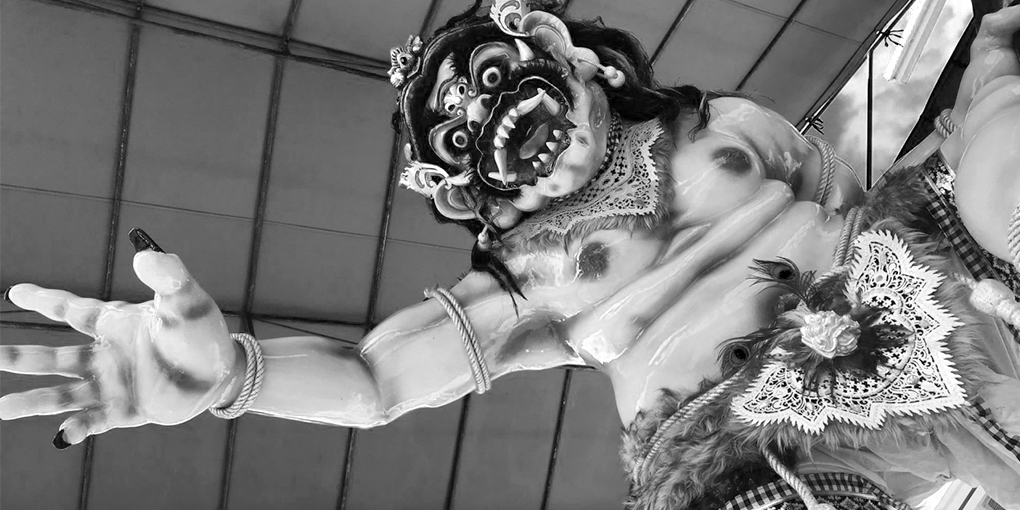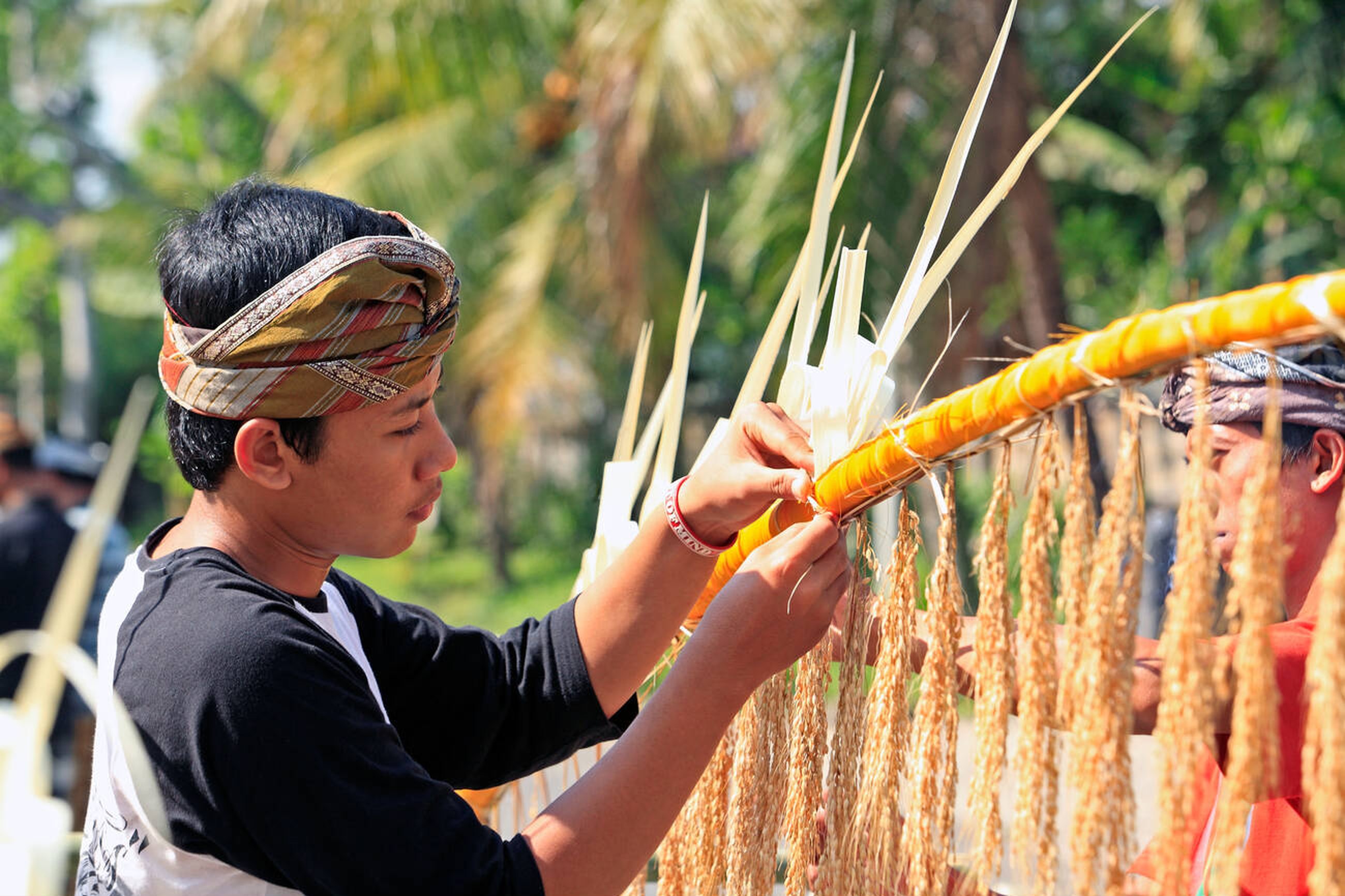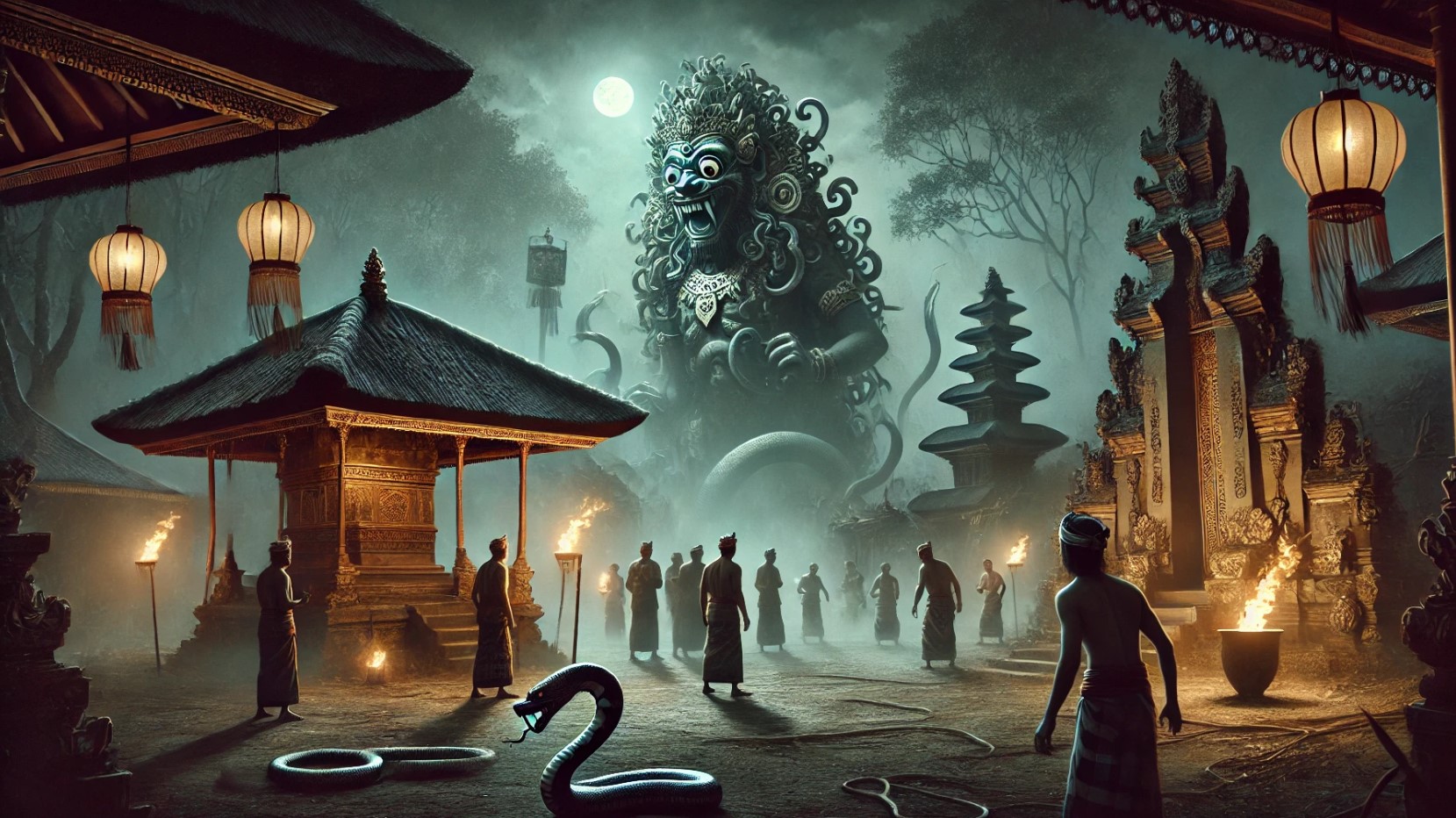In Bali, the night before Nyepi—the island’s sacred Day of Silence—is anything but quiet. The streets come alive with the raucous spectacle of the Ngrupuk Parade, where colossal, grotesque effigies known as ogoh-ogoh are paraded through the villages. Across most of Bali, this tradition is a cherished and highly anticipated event. However, one village in the heart of Denpasar stands as a curious exception: Desa Adat Renon.
Across most of Bali, Ogoh-Ogoh tradition is a cherished and highly anticipated event, except for one village...

A Whisper from the Beyond
Desa Adat Renon’s decision to forgo the annual ogoh-ogoh celebrations is not one of simple preference or oversight—it is rooted in a series of eerie, inexplicable occurrences that have convinced the villagers that the parade is best left untouched. The origins of this peculiar prohibition date back to 1985 when, after a few years of enthusiastic participation, the community began experiencing supernatural disturbances surrounding their ogoh-ogoh preparations.
As the effigies neared completion, villagers began reporting unsettling phenomena: the statues appeared to move on their own, some even trembling at their pedestals as if possessed. Others claimed to hear faint but chilling cries emanating from the figures. But the most alarming incident took place at the village’s pura dalem, the temple associated with death and the afterlife. The resident deity, Ida Sesuhunan, refused to be returned to its sacred resting place—a ritual known as nyineb—which led to widespread cases of trance and possession among those in attendance. It was a clear warning, and the village elders took heed. A divine whisper, or pawisik, instructed them to cease the ogoh-ogoh celebrations for the safety of the community. From that moment on, Desa Adat Renon abandoned the parade.
A Second Attempt—and a Second Warning
A decade passed, and with the memories of past events slowly fading, one local figure, I Wayan Suarta, decided it was time to challenge the taboo. In 1996, he rallied the villagers of Banjar Tengah to resurrect the ogoh-ogoh tradition, believing that perhaps the spirits would now allow it. The young men got to work, crafting a fearsome figure in preparation for the parade. Yet, as they labored, the unexplained began anew.

The effigy, despite being carefully measured to fit through the narrow village alleyways, inexplicably grew in size, making it impossible to move through the designated paths. A peculiar presence also made itself known—a black-and-white snake (poleng), a symbol of the balance between good and evil, frequently appeared near the worksite, only to vanish moments later. Even more bizarrely, the entire team found themselves inexplicably drawn to working late into the night, as if under a trance.
Recognizing the warning signs, Suarta sought spiritual guidance, embarking on a matur piuning, a ritual to seek permission from the divine at several sacred sites. However, during this process, he himself fell into a trance, dancing in the manner of Rangda—the fearsome witch queen of Balinese lore. He heard voices, saw faces shifting between the grotesque and the comical, and ultimately received what he believed was divine consent to proceed with the parade.
A Solemn Agreement
Despite the ominous signs, preparations for the parade pressed on. However, as the appointed night arrived and the village gathered in anticipation, history repeated itself. Trances and possessions swept through the crowd, and once again, the deity of the pura dalem refused to be returned to its sacred abode. A final pawisik came: the parade must not take place, and the effigy must be destroyed.
Realizing there was no defying the will of the unseen, the villagers gathered in solemn agreement. The ogoh-ogoh was set aflame, and as the flames consumed its form, peace was restored to Desa Adat Renon. From that night forward, the village vowed never again to challenge the decree. The spirits had spoken.

While the rest of Bali revels in the spectacle of ogoh-ogoh, Desa Adat Renon remains a quiet anomaly. Instead of crafting these towering figures, the village channels its creativity through other artistic expressions, such as the meticulous creation of Penjor—ornate bamboo poles that symbolize devotion and harmony. Whether seen as an enduring mystery, a testament to unwavering spiritual belief, or a chilling tale of the supernatural, their abstinence from the parade has become its own tradition—a silent homage to the forces beyond mortal comprehension.




 Billy Bagus
Billy Bagus
 Feb 19, 2025
Feb 19, 2025






